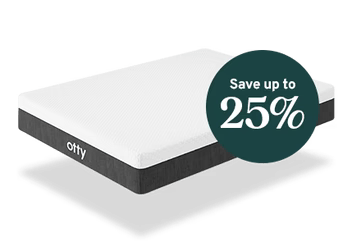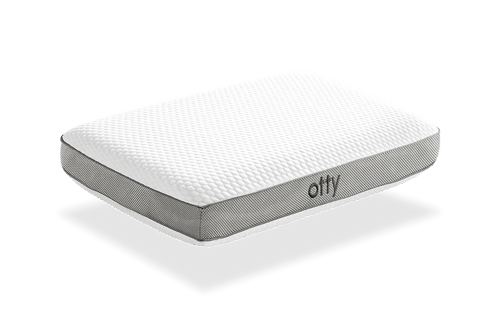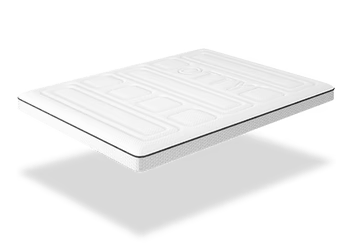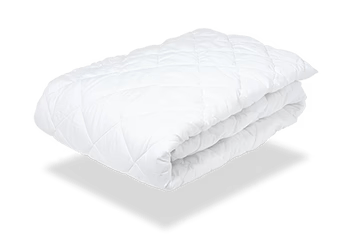Ever wondered why you wake up with a stiff neck or shoulder pain?
It could be your pillow. From memory foam to latex, duck feather to gel memory foam, the type of pillow you rest your head on can significantly impact your sleep quality and overall health.
In this guide, we'll explore different types of pillows, understand their pros and cons, and help you determine the best pillow for your sleeping position.
Table of contents
How to Choose the Best Pillow for Your Needs
Choosing the best pillow for your needs can seem difficult, given the range of options available. Here we'll look at the factors that you need to consider, such as your sleeping position and the different types of pillows suitable for each position.
Choosing A Pillow For Your Sleep Position
Close to 70% of the UK population sleep on their sides
Buying a pillow that aligns with your sleeping position is the most important thing you can do when buying a new pillow.
Are you a back, side, or stomach sleeper?
70% of the UK population sleep on their sides. If you do as well, it's critical to purchase a pillow that keeps your neck and shoulders aligned.
For side sleepers, a slightly more robust pillow option is recommended. This is due to the fact that thicker pillows can fill the gap between your shoulder and ear, which supports your body perfectly.
On the other hand, it is essential to ensure that a softer pillow does not cause your head to droop downwards to avoid waking up with a stiff neck.
If you sleep on your back, the optimal pillow type is thinner as it aids in maintaining an aligned neck and spine.
Side Sleepers
Opt for a firm and high-loft pillow to fill the space between your ear and shoulder.
Consider a contoured memory foam pillow for added neck alignment.
Knee pillows can further improve spine alignment.
Back Sleepers
A medium-firm pillow with medium loft helps keep your neck aligned without pushing your head too far forward.
Look for pillows with neck contouring or cervical support for added comfort.
Front/Stomach Sleepers
Choose a soft, low-loft pillow or skip the pillow altogether to prevent neck strain.
Thin memory foam or down alternatives can provide subtle cushioning.
Pillows For Different Health Conditions
If you suffer from certain health issues, choosing the right pillow can help manage symptoms and improve sleep quality.
Pillows For Neck & Shoulder Pain
Use orthopaedic or cervical pillows that support the natural curvature of your neck.
Memory foam and latex are ideal for targeted support and pressure relief.
Pillows For Allergies and Asthma
Choose pillows labeled hypoallergenic or made with anti-allergy fillings like latex or treated synthetic fibres.
Always use a pillow protector and wash regularly to reduce allergens.
Pillows For Allergies and Asthma
Pick pillows with cooling gel layers, breathable covers, or natural fillings like wool or bamboo that wick moisture and regulate temperature.
Exploring Different Types of Pillows
Each pillow type has its own set of benefits and drawbacks, and understanding these can help you make an informed decision.
Memory Foam Pillows
For people with neck or back pain; side and back sleepers.
Memory foam pillows are known for their ability to mould to your body shape, offering exceptional support.
Memory foam pillows aid in removing any excess pressure on your joints, thereby potentially providing relief from neck pain and other discomforts.
Whether you sleep on your back, front, or side, a memory foam pillow can adapt to your sleeping position. Our bamboo memory foam pillow is a particularly good option for neck pain relief, alongside our adjustable pillow for side sleepers.
Contours to your head and neck, offering personalised support.
Excellent for relieving pressure points and reducing pain.
Can retain heat unless designed with cooling features
Latex Pillows
For allergy sufferers and those who need firm, long-lasting support
Latex pillows are an excellent choice for those who prefer a sturdy pillow with durability. Being made from the sap of rubber trees, these pillows combine bouncy firmness with low-maintenance care. It's a type that appeals to those who want their pillow to retain its shape and provide consistent support throughout the night.
Naturally hypoallergenic
Dust mite resistant
Supportive
Heavier and firmer than other options.
Can be expensive.
Supportive
Synthetic Pillows
Allergy sufferers
Those on a budget
Anyone needing a low-maintenance option
Latex pillows are an excellent choice for those who prefer a sturdy pillow with durability. Made from the sap of rubber trees, these pillows combine bouncy firmness with low-maintenance care. It's a type that appeals to those who want their pillow to retain its shape and provide consistent support throughout the night.
Hypoallergenic
Affordable
Widely available
Lightweight
Often machine washable
Tend to lose shape and support more quickly than natural or foam options
Can retain heat depending on the filling
Summary and Takeaways
Choosing the right pillow is essential for achieving quality sleep, proper spinal alignment, and long-term comfort. Your ideal pillow depends on factors like sleep position, material preferences, budget, and health concerns.
Match your pillow to your sleep position. Side sleepers need firm, high-loft pillows; back sleepers should choose medium support; stomach sleepers require low, soft pillows.
Know your fillings. Memory foam contours to the neck, latex is firm and durable, down is plush, and synthetic options are budget-friendly and hypoallergenic.
Consider health needs. Orthopaedic pillows are ideal for neck pain; cooling materials help hot sleepers; hypoallergenic options support allergy sufferers.
Budget wisely. High-quality pillows exist across all price ranges, but investing in a mid-range or premium pillow can improve longevity and support.
Care and replace regularly. Most pillows should be replaced every 1–2 years. Use protectors and follow cleaning instructions to extend their life.











